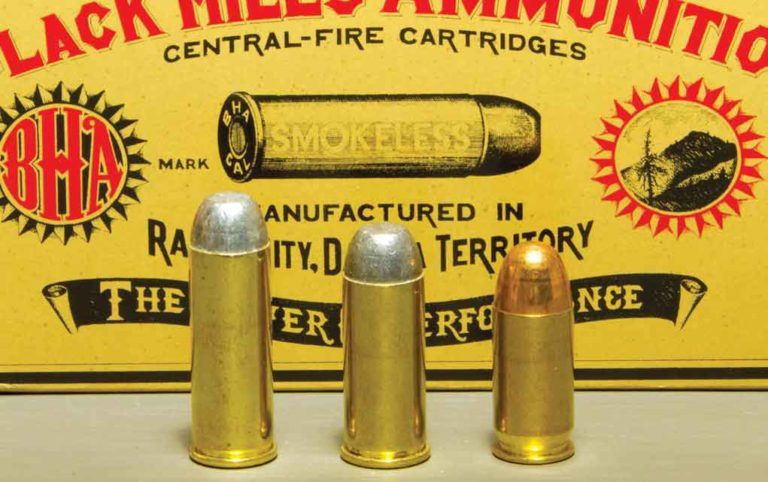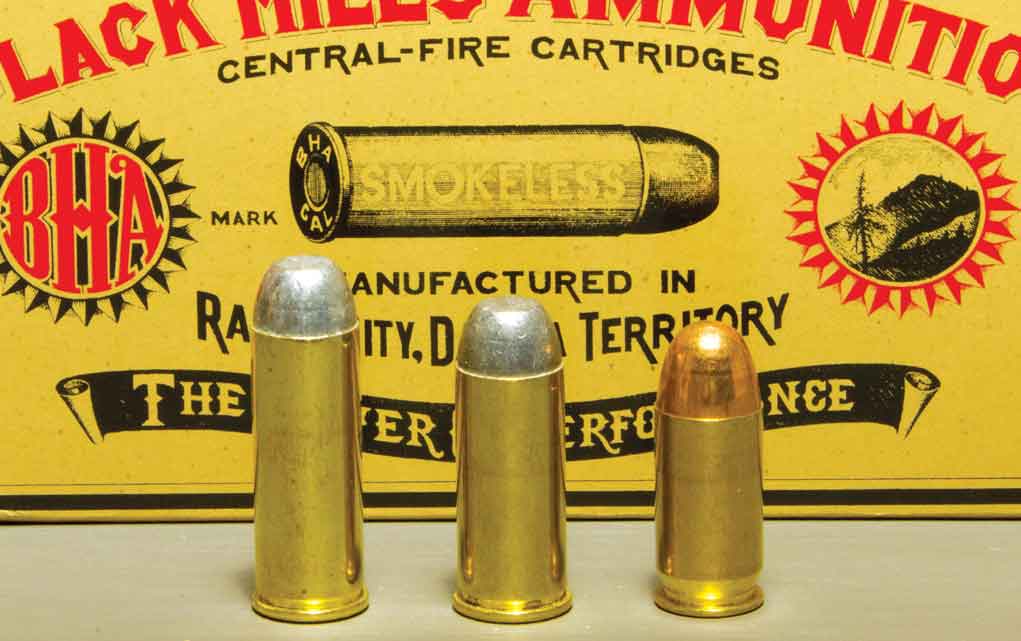
The .45 ACP has long been one of the most popular for personal defense among those who carry, but is the 9mm starting to edge it out?
In .45 ACP vs 9mm, is the .45 still the top self-defense choice?
- A key point in choosing self-defense ammo is its ability to quickly neutralize a threat.
- The .45 ACP, .40 S&W or 9mm are the most commonly argued for calibers.
- Hornady's chief ballistician Dave Emery says there's little difference between them.
- Terminal performance of modern defensive rounds is relatively similar in ballistics gel.
- Some stick to the .45 ACP — if technology fails, the round still makes a bigger hole.
While attending a recent event where .45-caliber semi-automatic handguns, double-action revolvers and single-action revolvers were shot at contact to long-range targets in simulated self-defense situations, it brought to mind the United States’ long-standing love affair with the .45-caliber handgun round. Yet, many who carry a handgun as part of their job choose to use other handgun cartridges, such as the .40 S&W and 9mm Parabellum.

The disagreement about what’s the best handgun cartridge for self-defense never seems to end, and it probably never will until someone invents a handgun that will always stop a felonious assault immediately.
You see, handguns just aren’t very effective fight stoppers. The reason people carry them is because they are easy to keep out of sight and they’re readily available in an emergency. Rifles in almost any caliber and shotguns are much better at stopping an aggressor, but they’re not easy to carry — and, incidentally, they too are not perfect at immediately stopping an attack. So, for the time being, handguns are the method of protection that most people rely on.
But, you say, on TV and in the movies, if a guy gets shot with a handgun, he goes down right away. That’s the movies, and it’s Hollywood, where fantasy reigns. It’s not real life.
In his book, Guns, Bullets, and Gunfights, Jim Cirillo, a real gunfighter and member of the New York Police Department Stakeout Unit, states, “I have seen felons get shot with 158-grain .38 Special, 200- and 230-grain .45 ACP, 115-grain 9mm hollow points, 110-grain .30 Carbine and 12-gauge 1-ounce slugs, and only two of those [many] incidents were one-shot stops.”
More .45 ACP Articles:
- .45 ACP Ammo Options For Self-Defense
- 10 Top .45 Pistol Options For Any Budget
- .45 ACP Vs 9mm: Does The .45 Still Reign Supreme?
Keep in mind that human spirit and determination varies. Some people intent on doing injury to others will be stopped and scared off at the mere sight of a gun. Others will be stopped by a minor injury or thumping them with a fist. But a small number will not stop unless they’re physically unable to continue.

For the last group, they must no longer be able to breathe, the blood supply must be interrupted so that muscles and organs can no longer function, a bone must be broken so that the person can no longer control the body, or the nervous system must be disrupted so that the brain can no longer send signals to the muscles.
And even if the air or blood supply is cut off, a person can still function for long enough to continue an attack and kill a victim. So, the goal for a law-abiding citizen, who has no other choice to save his life or prevent serious bodily harm from a felonious attack, is to do as much damage as necessary to quickly stop the attacker. Notice that the goal is not to kill the attacker, but to stop the attack. If the attacker turns and runs, that’s a good outcome, but if the attacker is killed in lawful self-defense, that’s a consequence the attacker assumed when starting the aggressive behavior.
Given these realities of life, it makes sense to carry a handgun chambered in the most effective cartridge available that the shooter can shoot accurately, quickly and can carry discreetly. This is where the argument begins. And the argument has been raging for decades with no clear winner.
It’s All In The Ammo: .45 ACP vs 9mm, .40 S&W
The FBI and other law enforcement organizations are switching to the 9mm Parabellum. Reasons include lower recoil generated by the 9mm round, which makes it easier for many people to shoot accurately and get back on target quickly for follow-up shots. And a 9mm handgun can carry more rounds than the same-sized handgun chambered in .40 S&W or .45 ACP. That’s an important consideration given the rising frequency of group attacks by terrorists or gang members.

But probably the biggest reason for the switch is the recent improvement in handgun round terminal ballistics. According to Dave Emery, wizard and senior ballistician at Hornady Manufacturing, an innovative maker of a variety of ammunition, there’s now very little difference in the actual terminal performance in ordnance gelatin between premium self-defense .40, .45 and 9mm projectiles.
Yet the disagreement continues. While some excellent firearms trainers and experts, many who have carried a gun for a living and participated in real gunfights, have switched from .45 ACP to 9mm, others still carry the .45 ACP.
No less than the late Pat Rogers, who I have trained under and who has used a gun while in the U.S. Marines and as an officer with the New York Police Department, switched from a 1911 chambered in .45 ACP to a double-stack, striker-fired 9mm polymer-framed pistol. And many experienced gunfighters have done the same. But others, like retired Sheriff Ken Campbell, who is the Chief Operations Officer at Gunsite Academy, still favor the .45 ACP.
Campbell points out that gelatin blocks are not human and that humans are much more complex and react differently than an inanimate, unmotivated blob of jelly. He recognizes the improvement in self-defense bullet technology that has resulted in better terminal ballistics for the 9mm round, but the .45 ACP bullet has also improved.
“I’ll stick with the bigger bullet,” Campbell says. “Again, when technology fails, the .45 ACP makes a bigger hole. Also, it has a greater chance of hitting something vital since it is wider.”
But Campbell is rational and not married to the .45 ACP just because of tradition. He recognizes that getting multiple, fast and accurate hits in vital locations is more important than bullet performance, and if he ever gets to the point that he physically cannot control the .45 ACP adequately, he will consider switching to smaller bullets. In fact, despite the 1911 .45 ACP heritage associated with Gunsite, the school regularly teaches students how to effectively use other guns in other calibers.
For some, the .45 ACP works best, but for others, the .380 ACP or an even smaller round is the right choice. There is no way everyone is going to agree on this, so the debate continues.
Editor's Notes: The article originally appeared in the September 17 issue of Gun Digest the Magazine.

Next Step: Get your FREE Printable Target Pack
Enhance your shooting precision with our 62 MOA Targets, perfect for rifles and handguns. Crafted in collaboration with Storm Tactical for accuracy and versatility.
Subscribe to the Gun Digest email newsletter and get your downloadable target pack sent straight to your inbox. Stay updated with the latest firearms info in the industry.

![Best Concealed Carry Guns In 2025 [Field Tested] Wilson Combat EDC X9S 1](https://gundigest.com/wp-content/uploads/Wilson-Combat-EDC-X9S-1-324x160.jpg)


![Best 9mm Carbine: Affordable PCCs [Tested] Ruger Carbine Shooting](https://gundigest.com/wp-content/uploads/Ruger-Carbine-Shooting-100x70.jpg)


Finally! An article that makes reference to what seems me the obvious reality of ballistic gel and a living host being very, VERY different. However brief the mention of which, I appreciated hearing a professional acknowledge a fact over which I’ve long brooded in quiet frustration. Ballistic gel does not possess a nervous system, nor is it connected to a central command organ such as a brain. It therefore cannot “react” the way a human body would when subjected to hot lead. I’ve been given to understand that the wider circumference and heavier grain weight of the .45 will result in a greater degree of Hydrostatic shock than it’s 9mm counterpart. While the aforementioned term has yet to garner acceptance from the mainstream scientific community (a fact by which I’m not particularly bothered), the information I have read and been privy to lends credence to the belief that the .45 is indeed ballistically superior, and that, contrary to the common firearm enthusiast, the efficiency of the two rounds do not approximate one another.